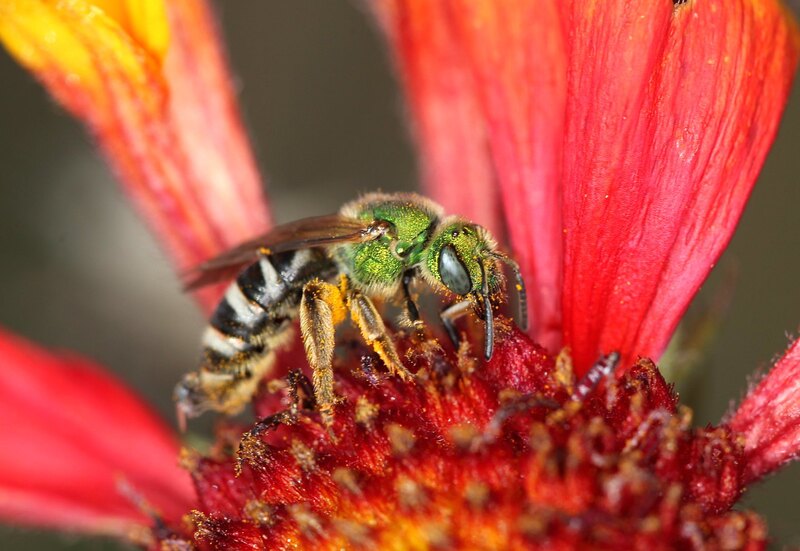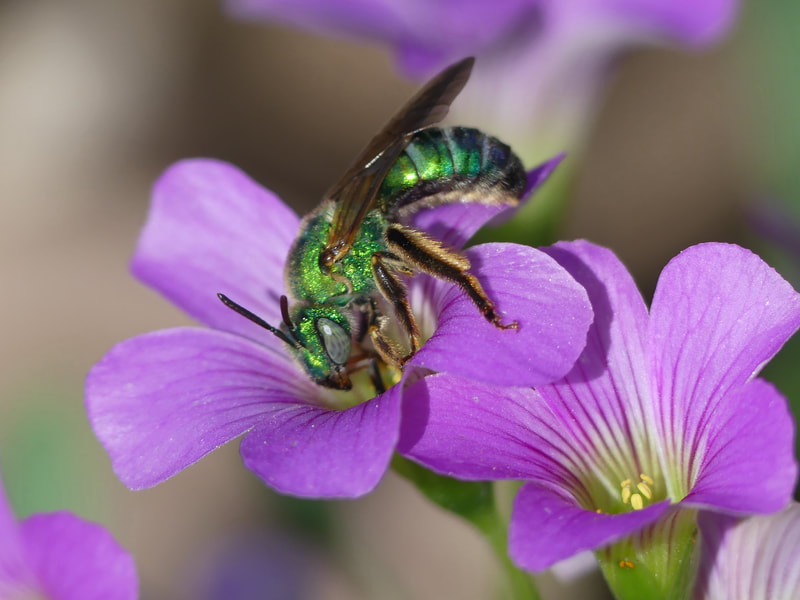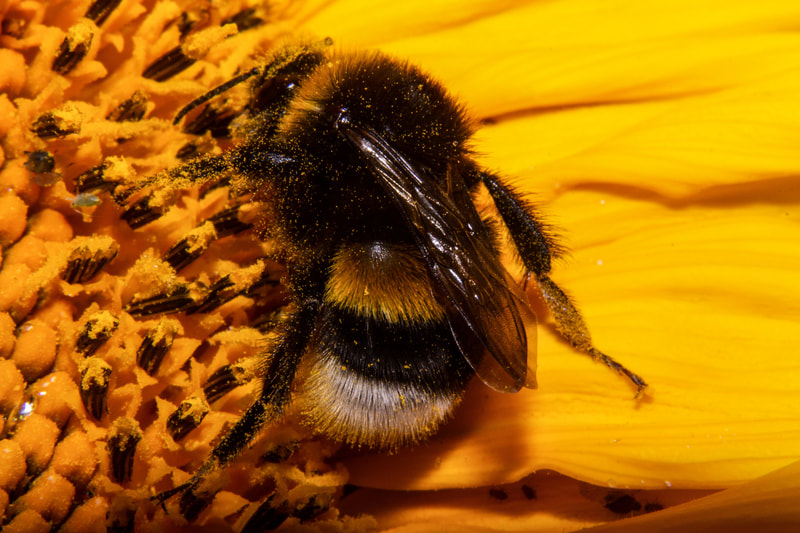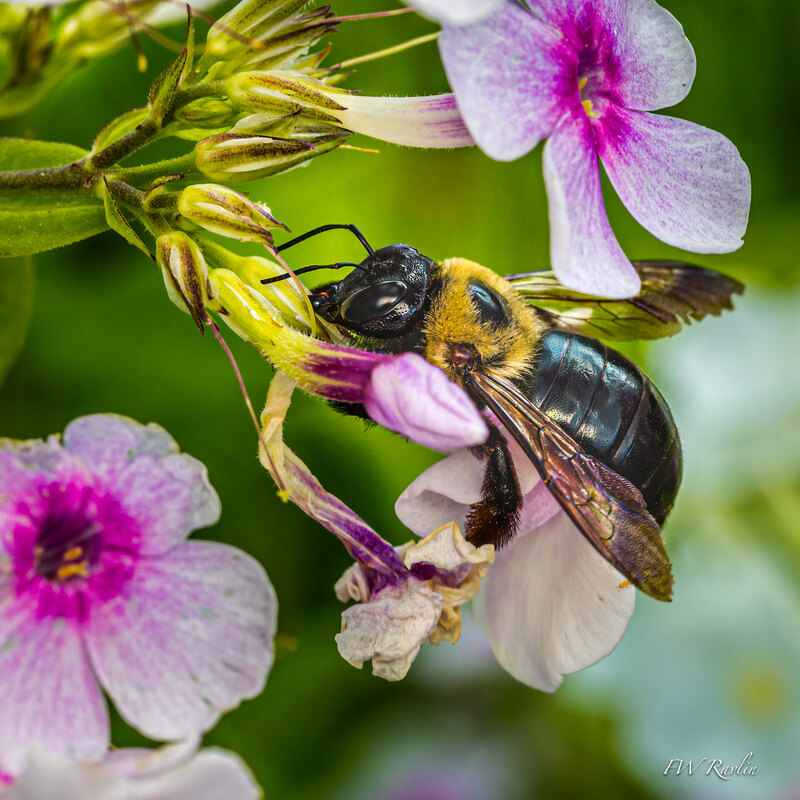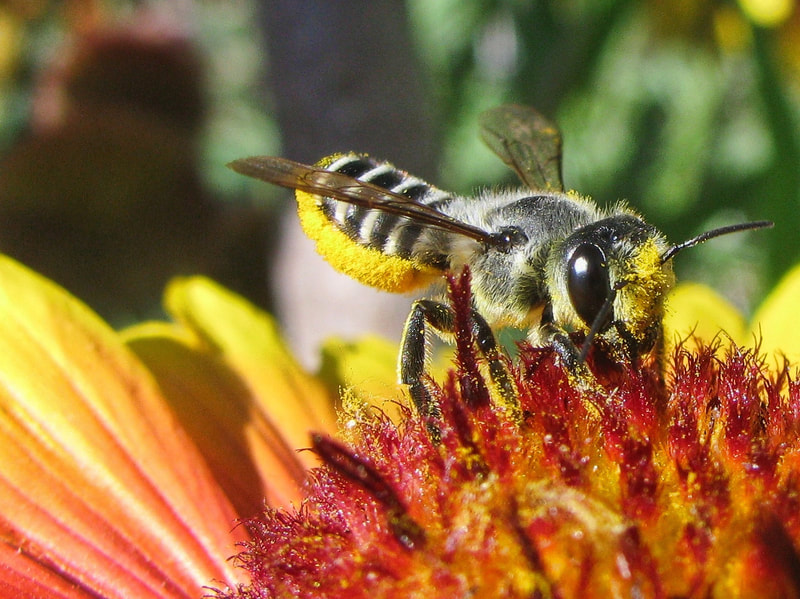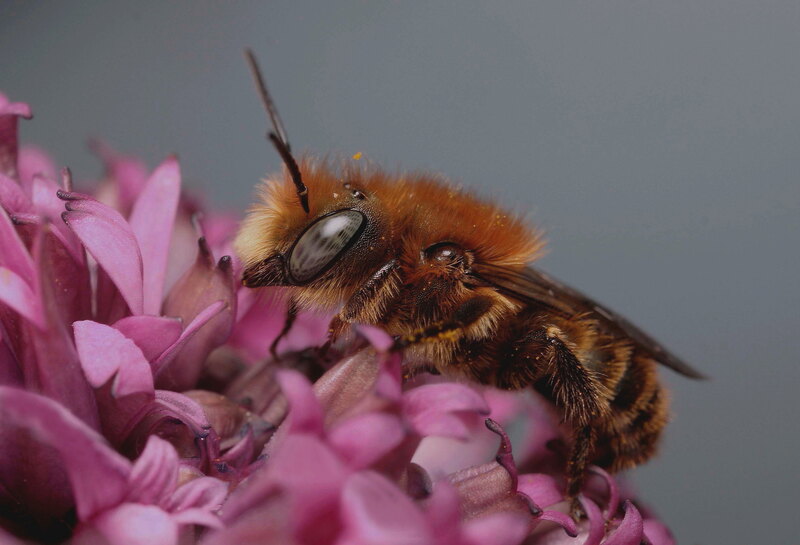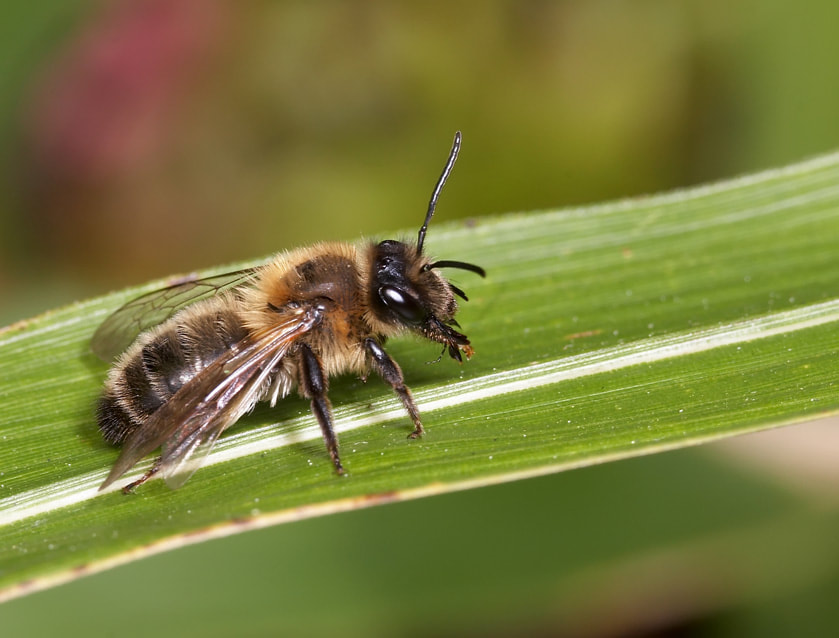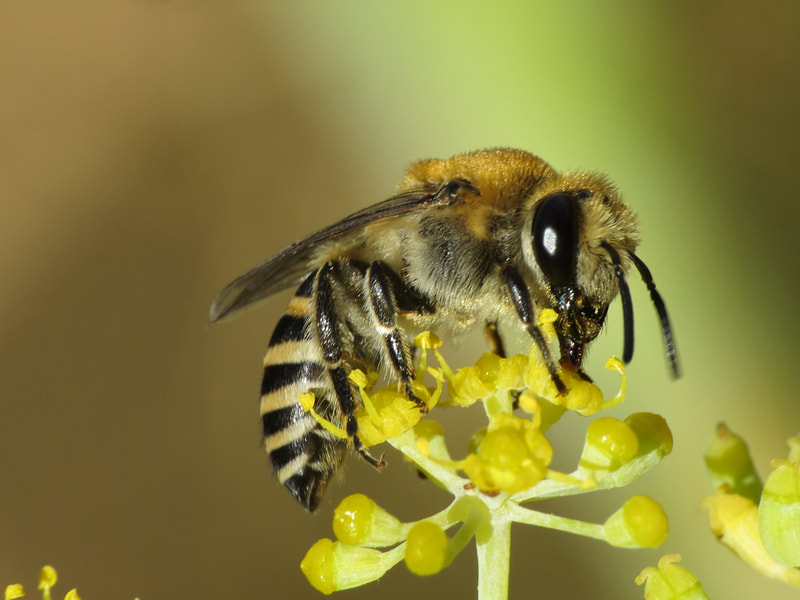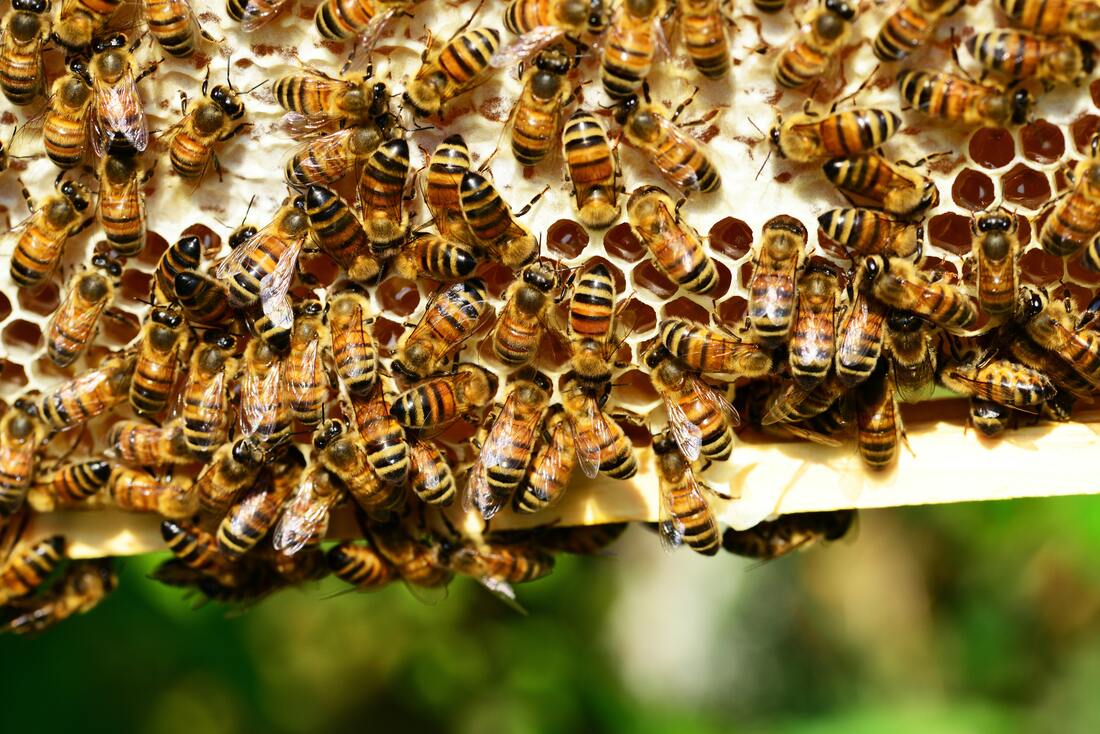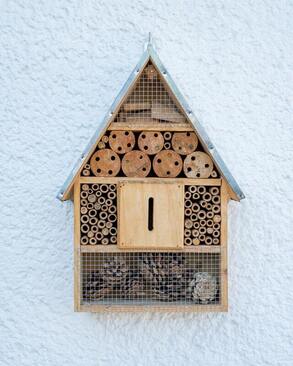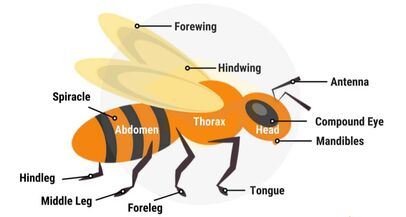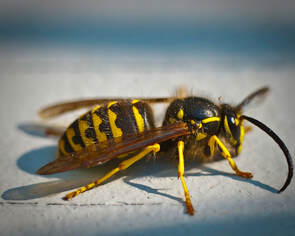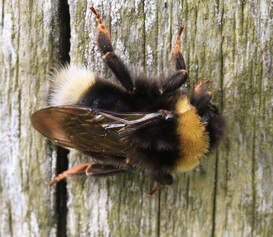Did you know?
There are over 800 types of wild bees in Canada alone. These bees can vary wildly in shape and colour, with some looking more like flies, some have black and white stripes, others being bright blues or greens, and some nest underground while others make holes in wood logs. Many of these bees are solitary and don't produce honey at all. Despite this, wild bees are crucial to protecting the local ecosystem and they are declining quickly!
Here are some of the more common wild bees you might see in your area:
There are over 800 types of wild bees in Canada alone. These bees can vary wildly in shape and colour, with some looking more like flies, some have black and white stripes, others being bright blues or greens, and some nest underground while others make holes in wood logs. Many of these bees are solitary and don't produce honey at all. Despite this, wild bees are crucial to protecting the local ecosystem and they are declining quickly!
Here are some of the more common wild bees you might see in your area:
|
So what about honey bees?
Honey bees are not native to North America. This is why there are very few cultural or religious traditions related to honey outside of Europe, Africa, and parts of Asia, where honey-producing bees are found. The honey bee found in Canada, the European Honey Bee (Apis Mellifera), is therefore considered an invasive species. The honey bee, unlike the wild bees, live in hives with a complex social structure with thousands of bees with various roles. While they produce more than they need, the honey is the food source for the hive over the winter months. This means that when a hive is introduced into an area, suddenly wild bees need to compete for their food against the thousands of honey bees. To avoid causing damage to wild bee populations, responsible beekeepers must provide enough space and food sources for both honey bees, and wild bees to live together. |
|
What can we do to protect the wild bees?
There are many ways to help! The easiest ways are to simply know more about what they look like, how they act, and why we need them (Don't forget to share what you know)! You can also plant native flowers for them to eat, and create comfortable spots for them to nest over winter. Consider planting a pollinator garden, or building a bee hotel at home or in your local community gardens. You can also shop local for organic and sustainably sourced foods to reduce the use of harmful pesticides and emissions. Where possible, also consider creating new community gardens, green spaces, or asking local politicians to increase green space, and reduce pesticide use. |
What are pollinators?
Pollinators are anything that carries pollen from one flower to another. By doing this, the plants are then able to create a fruit and continue to reproduce, and feed not only humans, but other creatures.
So while bees are ultra efficient at being pollinators, they are not the only things that do.
Wasps, butterflies, flies, other insects, birds, bats, and other small mammals can also be considered pollinators.
Pollinators are anything that carries pollen from one flower to another. By doing this, the plants are then able to create a fruit and continue to reproduce, and feed not only humans, but other creatures.
So while bees are ultra efficient at being pollinators, they are not the only things that do.
Wasps, butterflies, flies, other insects, birds, bats, and other small mammals can also be considered pollinators.
What defines a bee?
All bees fall under the Hymenoptera order of insect.
In a very general sense, they all share a common trait of having wings, stingers, and other common characteristics. While bees can vary wildly in size, colour, and pattern, they all work as pollinators as they move from flowers and trees in the search of food.
A unique trait that is commonly associated with bees, is the ability to make honey. However, not all bees do, and bees aren't the only insect that can! Only some bees are able to make enough for humans to take some without endangering the colony.
All bees fall under the Hymenoptera order of insect.
In a very general sense, they all share a common trait of having wings, stingers, and other common characteristics. While bees can vary wildly in size, colour, and pattern, they all work as pollinators as they move from flowers and trees in the search of food.
A unique trait that is commonly associated with bees, is the ability to make honey. However, not all bees do, and bees aren't the only insect that can! Only some bees are able to make enough for humans to take some without endangering the colony.
Are wasps bees?
NO! Though they are from a similar family of insect, wasps and hornets are not bees.
There are some key differences that make telling them apart easy!
NO! Though they are from a similar family of insect, wasps and hornets are not bees.
There are some key differences that make telling them apart easy!
|
|
Don't bees sting?
How many people are allergic to hornet, wasp, or bee stings?
How do you treat a bee sting?
1. Move away from area where stung
2. Remove stinger if still in skin
3. Wash with soap and water
4. To soothe the skin, apply:
6. Keep an Epi-Pen on hand
How many people are allergic to hornet, wasp, or bee stings?
- Less than 1% of children
- About 3% of adults
- Canada: ca 3-4 deaths/yr.
- CA population: 38 million
- US, 2000–2017: ca. 62 deaths/yr.
- US Pop: over 290 million
How do you treat a bee sting?
1. Move away from area where stung
2. Remove stinger if still in skin
3. Wash with soap and water
4. To soothe the skin, apply:
- calamine lotion
- baking soda
- apple cider vinegar OR
- Ice
6. Keep an Epi-Pen on hand
If you want to learn more about bees in North America, or want to get involved in bee conservation in other ways, check out some other resources below from our friends at:

